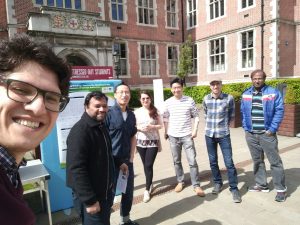After attending ISO/IEC SC 27 WG2 for 4 years, I’m happy to say that J-PAKE is finally published in ISO/IEC 11770-4 (2017) as an international standard. In the mean time, J-PAKE is also published in RFC 8236 by IETF (together with an accompanying RFC 8235 on Schnorr non-interactive zero-knowledge proof). This is a milestone for J-PAKE. From the first presentation at Security Protocol Worksop ’08 in Cambridge to the publication in the international standard in 2017, J-PAKE has come a long way. The critical insight in the design of J-PAKE was based on understanding the importance of zero knowledge proof (ZKP), but this insight was not shared by other researchers in the field at the time. One main reason is that the use of ZKP was considered incompatible with the then-universally-adopted formal models in the PAKE field. However, in an independent study due to Abdalla, Benhamouda, MacKenzie and published in IEEE S&P 2015, the formal model for PAKE protocols was modified to make it compatible with ZKP, and the modified model was applied to prove J-PAKE was secure. The provable results are the same as in the original J-PAKE paper, but are constructed in a formal model, thus bridging the gap between theory and practice in the end.
Today, J-PAKE has already been used by many million users in commercial products, e.g., Palemoon Sync, Google Nest, ARM mbed OS, OpenSSL, Mozilla NSS, and Bouncycastle API. In particular, J-PAKE has been adopted by the Thread Group as a standard key exchange mechanism for the IoT commissioning process, i.e., adding new IoT devices to an existing network. The protocol has already been embedded into IoT products. The following video demonstrates how J-PAKE is used to securely enrol a new IoT device into the Thread network during the commissioning process (more details about Thread can be found at NXP, Thread Group, ARM, Silicon Labs and Google Nest’s Open Thread). It’s expected that in the near future, J-PAKE will be used by many billion Thread-compliant IoT devices for the initial bootstrapping of trust.






